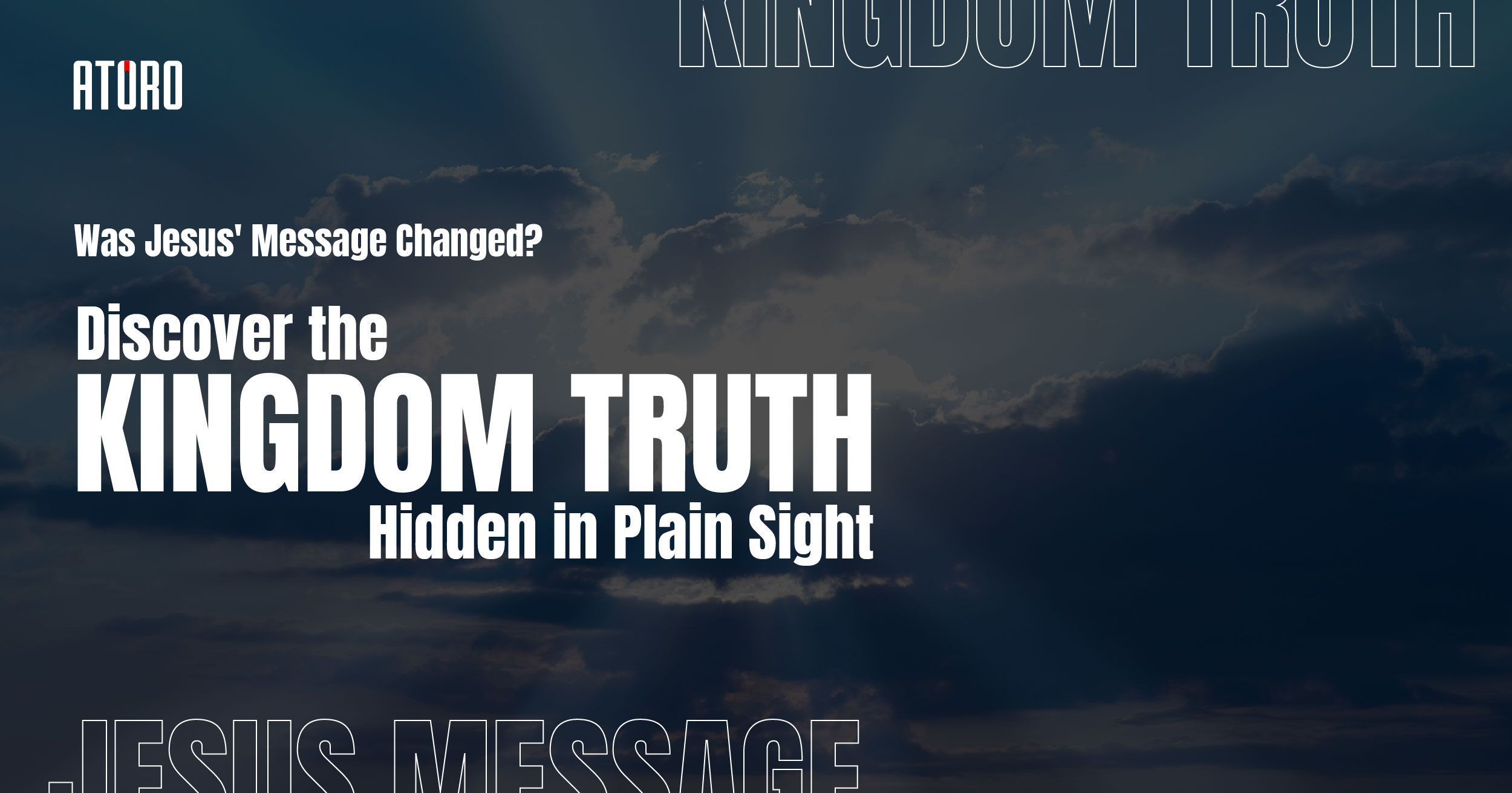In ATORO’s book, red vs blue Bible text is symbolic.
This color-coding isn’t just to make verses look appealing in Proclaiming the Gospel of God’s Coming Kingdom on Earth. It’s a powerful tool. It helps you see what’s truly in scripture … and what was added later.
If you’ve ever been confused about certain verses or feel like parts of the Bible don’t quite match up, this system will help you clear things out.
Let’s break down what the colors mean. And why it changes the way you read the Bible.
What is Red vs Blue Bible Text?
In Proclaiming the Gospel of God’s Coming Kingdom on Earth, ATORO uses a bold but simple tool: red vs Blue Bible text. It is to help readers identify and understand the difference between what’s original in scripture and what’s not.
Here’s how it works:
- Blue text signifies the KJV Bible verses. It shows words that have been added by the translators, words not found in the original Hebrew or Greek. These often reflect church tradition, not God’s actual message.
- Red text signifies the Hendrick Interlinear Bible verses. It shows words that come directly from the original languages. These stay true to what God inspired.
This system clears up confusion. It also reveals how some common beliefs come from man-made changes, not scripture itself.
Once you understand the meaning of Bible color codes, you’ll start reading with sharper eyes. As a result, you won’t just take verses at face value; you’ll ask, Was this really in the original?
That’s the point of the color system: to help you read smarter, not harder.
Why Color Coding Matters?
Most people read the Bible assuming every word is original. But that’s not always true. That’s why the red vs blue Bible text system matters so much. It shows what came from God and what came from translators.
When you see blue text in Proclaiming the Gospel of God’s Coming Kingdom on Earth, it’s a signal. Many of those words are not in the original text. Instead, they were added on, often to support a tradition or belief that isn’t in the Bible.
Moreover, the red text shows the actual words written in Hebrew or Greek. These form the foundation of what God really said.
This color-coded system helps you tell the difference. It takes out the guesswork. Additionally, when you read with this symbolism in mind, you protect yourself from assuming every word is divine. Instead, you get clarity. You can see how much of the Bible was translated. And how some parts were completely changed.
Examples That Will Surprise You
Some verses look completely different once you start using the red vs blue Bible text system. Words you’ve heard your whole life suddenly stand out, not in a good way. Here are a few examples from Proclaiming the Gospel of God’s Coming Kingdom on Earth that might surprise you:
“Hell” in Blue
Many Bible versions use the word hell over and over. But in the original texts, that word doesn’t exist. Instead, the Bible used words like Sheol (Hebrew) or Gehenna (Greek), which have different meanings. When you see hell in blue, you realize it was added, changing how people view judgment and the afterlife.
“Gentiles” in Blue
Another shocking example is the word Gentiles. Translators used it to replace nations or ethnos. That shift made it seem like God’s message was meant for everyone equally. But when you see Gentiles in blue, you understand how the meaning was changed. This is a powerful example of the meaning of Bible color codes, which helps expose a major translation twist.
“Heaven” Instead of “Heavens”
Jesus often spoke about the kingdom of the heavens – plural. But many modern Bibles shorten it to the kingdom of heaven, shifting the focus upward instead of forward. The red vs blue Bible text shows where that change happened, helping you see the original message more clearly.
How This Helps You Read Scripture Differently
The red vs blue Bible text system doesn’t just highlight mistakes. It helps you read with confidence.
When you can see what’s original and what isn’t, you read the Bible more clearly, with less confusion. You stop guessing. Moreover, you start asking better questions. And you start to see patterns in scripture that you had missed before.
This approach helps you slow down and think about what you’re reading. It also helps you spot where church traditions may have changed or redirect the message. You’re not just reading passively; you’re engaging with the text.
The meaning of Bible color codes becomes more than just visual. It not only turns into a tool for truth, but also a way for you to know which words to trust and which ones to double-check.
That being said, that kind of reading builds a deeper faith, one that isn’t built on tradition alone, but on what God actually said.
What Atoro’s Book Does Differently
Most Bible study books quote verses and add commentary. But Proclaiming the Gospel of God’s Coming Kingdom on Earth takes a different path. It lets the Bible speak for itself, using the red vs blue Bible text to show you what’s original and what’s not.
Atoro doesn’t ask you to just trust his words. He shows you the actual text, marked clearly. You’ll see where translators added terms like hell or Gentiles. You’ll notice where religious language replaced the original message. And most importantly, you’ll understand how those changes shaped what people believe today.
This book isn’t about creating confusion. It’s about clearing it up.
Using color codes with purpose, Atoro helps find the meaning of Bible color codes and how they affect doctrine. You don’t need to guess or rely on scholars. The truth is right there, in black, red, and blue.
Conclusion
The red vs blue Bible text system isn’t just a style choice. It’s a study tool that changes how you see scripture.
Once you know what each color means, you start asking the right questions. Did God really say this? Or does this verse misconstrue what he actually said? That’s where the journey begins.
If you’ve never looked into the meaning of Bible color codes, now is the time. Proclaiming the Gospel of God’s Coming Kingdom on Earth gives you the clarity you didn’t know you needed.
Don’t just read scripture. Understand it.
If you’re ready to see the Bible in a whole new light, this book is your next step.


